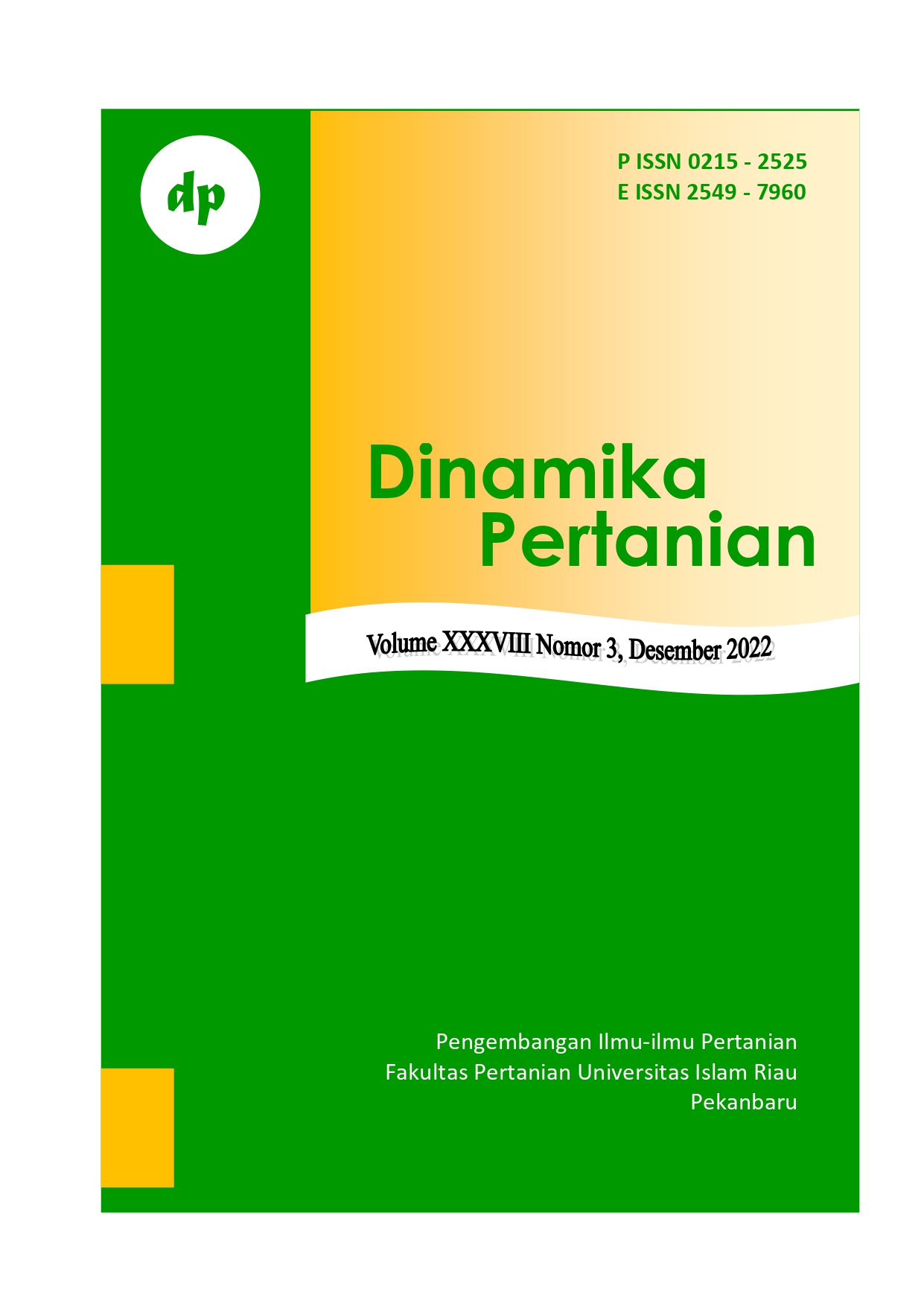PENGARUH POC KULIT PISANG KEPOK DAN PUPUK TSP TERHADAP PERTUMBUHAN DAN HASIL TANAMAN KACANG TANAH (Arachis hypogeae L.)
DOI:
https://doi.org/10.25299/dp.2022.vol38(3).11904Keywords:
Banana, Liquid Organic Fertilizer, Nutrients, PhosphorusAbstract
Kepok banana is quite widely used in Pekanbaru because this banana is one of the main ingredients in making typical Riau Pekanbaru food souvenirs. Therefore, the waste of banana peel produced is very high. If left unchecked, it will have a negative impact on the surrounding environment. Based on this, the solution may be processing banana peels as LOF (Liquid Organic Fertilizer). The purpose of this study was to determine the effect of liquid organic fertilizer from kepok banana peels and TSP on the growth and production of peanut plants. This study used a factorial completely randomized design (CRD) with 3 replications. The first factor was the concentration of LOF kepok banana peels, consisting of 4 levels, 10, 20, and 30 ml/l of water, and the second factor was the dose of TSP fertilizer, consisting of 4 levels, are 0, 6, 12, and 18 g/plot. The parameters observed were plant height, appropriate growth rate, net assimilation rate, pod dry weight per plant, the weight of 100 seeds, and harvest index. The data were analyzed by ANOVA with the BNJ further tested at the 5% level. The results showed that the interaction of kepok banana peel POC treatment and TSP significantly affected all parameters and increased the growth and production of peanuts. The results with the best treatment combination were 30 ml/l of POC Kepok banana peels concentration and 18 g/plot of TSP dose.






